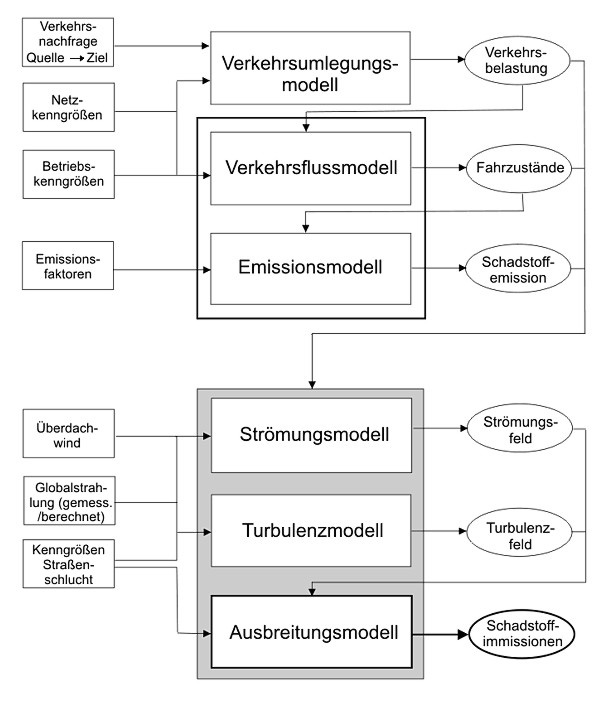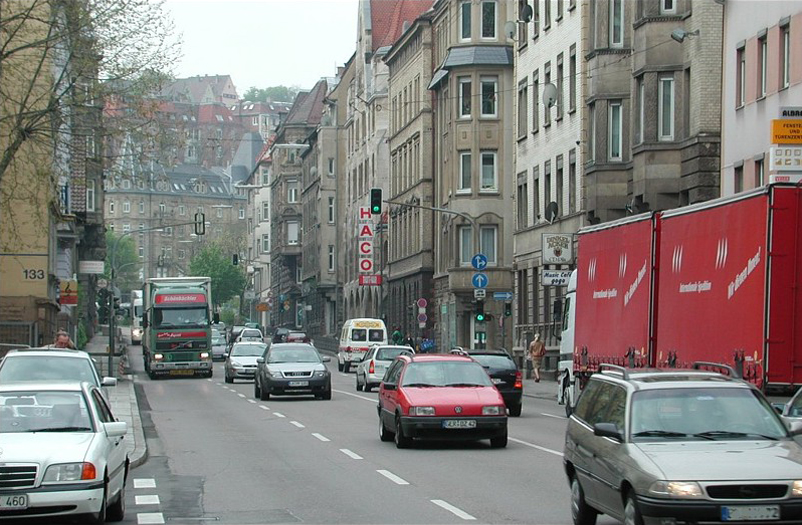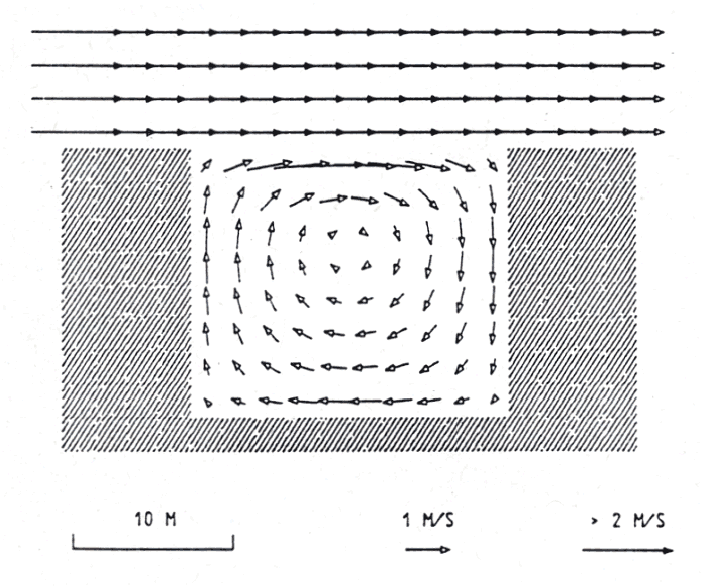|
|
| CHARACTERISTICS AND FORMS OF THE URBAN CLIMATE |  |
| | | |
 2.8.2 Computational Estimation of Traffic Immissions 2.8.2 Computational Estimation of Traffic Immissions |
In order to estimate levels of pollution on roads it is necessary for a model to reproduce the causal relationship emission – transmission – immission as exactly as possible. The result is a so-called "dispersal model." Input values include data about traffic (traffic counts, driving behavior), meteorology (wind flow and dispersion conditions), and the geometric border conditions (topography) (Fig. 2/20).
A typical basis for such a calculation is the construction of a Gauss distribution (Gauss model) for the concentrations on those streets (typically without bordering development) to be considered as linear sources (e.g. Prokas model – see Chapter 4.3.5).
A more empirical basis is employed in the Merkblatt über Luftverunreinigungen (Instruction Booklet for Air Contamination on Streets – MLuS-02) (see Chapter 4.3.4), which sets forth the reduction functions for individual pollutants depending upon the distance from whence they are measured.
Substantially more complex is the calculation of concentrations according to a Lagrange model (JANICKE, 1990). This involves releasing discrete particles representing air pollutants at various locations across the road area and calculating their subsequent paths (trajectories). Since the particles must be so small that they directly follow the turbulence in the atmosphere, the calculation of many such trajectories (several tens of thousands!) produces a spatial distribution that corresponds to the distribution of pollutant concentrations.
Box models in various modified forms are typically used for street canyons (see Chapter 4.3 und auf die Zusammenstellung bei LUBW (2010).
In contrast to the dispersal of pollutants from relatively freestanding streets, the dispersal in street canyons (Fig. 2/21) takes place under strongly altered conditions resulting from the whirlpool formations occurring there (Fig. 2/22). In particular, the buildings that form the borders of street canyons impede the removal of pollutants. The width of the street plays a deciding role here. Due to the circulation patterns arising from whirlpool formation, the windward and leeward sides of the road have different pollutant levels.
|
|
| | | |
 |
Fig. 2/20: Schematic diagram of dispersal calculations for air pollutants on roads, Source: GEOMET (1987)
| | |
 |
| Fig. 2/21: Urban street canyon with heavy automobile traffic | | |
 |
| Fig. 2/22: Schematic depiction of turbulence in street canyons with lengthwise airflow |
|
